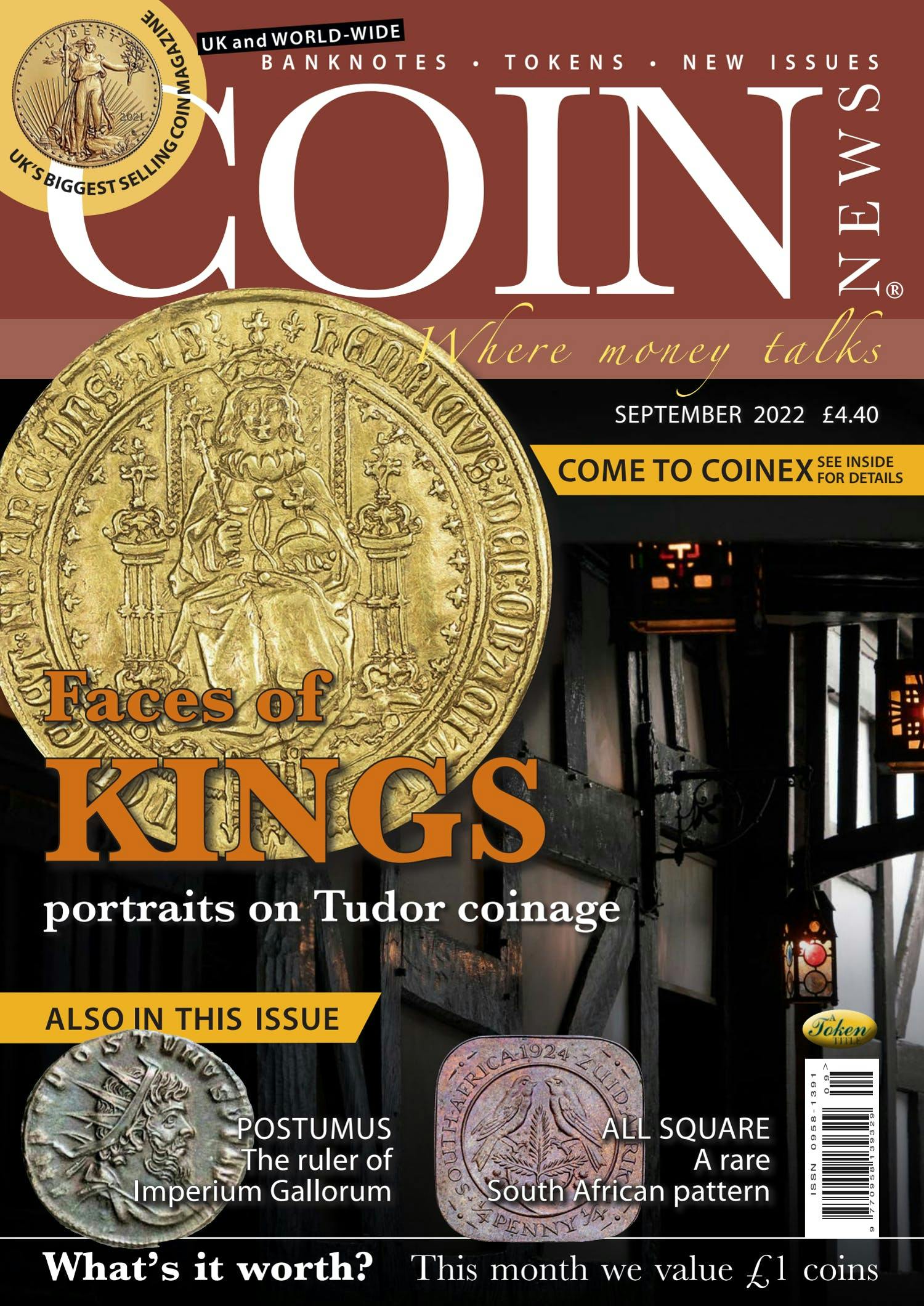Faces of Kings
Volume 59, Number 9, September 2022
Perfectly encapsulated? THANK you to all who have sent in your comments regarding this “Editorial”; so far we seem to have a 50/50 split on whether it’s to be two columns or remain as one, so we’ll keep checking the post bag for the deciding votes! As to topics that I haven’t yet covered, well it seems there is little that I haven’t touched upon these past 30 years but there are one or two topics you’d like to see discussed more often—one is “slabbing”. For those of you unfamiliar with the term, “slabbing” (to give it its colloquial name) is the practise of grading, and then encapsulating the item graded in plastic/ Perspex or similar. It isn’t just coins that are slabbed, but banknotes, trading cards, comics et al. Indeed, almost any smallish collectable can be thus encapsulated, ensuring that the grade it has been given remains in perpetuity. The practise is widespread in the USA and has, over the years, become more accepted in the UK and mainland Europe, but it still isn’t as widely adopted on this side of the pond as it is in America where the vast majority of coins, both at auction and on lists/ at shows, are slabbed. You will, I am sure, have come across terms like “MS65” or “AU58” etc. Well, these apply to the scale used to grade by a variety of companies that specialise in such grading. In this case, MS stands for Mint State, AU for “Almost Uncirculated” (it’s a 70 point scale with 60–70 being the equivalent of our uncirculated, 50–59 being our EF, 40–49 equivalent, roughly, to the UK’s VF and so on). Once you learn the scale, it’s easy to adopt with the main difference between our system and the US one being that there are ten point variants within one grade. Where we would use “uncirculated”, they have ten different measures; in short, our brush strokes are broader. Of course, once a grading company has made their pronouncements on a coin, certified it as MS65 or whatever, they then need to ensure it stays that way—after all, they couldn’t put their name and grade to a coin that then goes on to be kept loose in a tin with others, could they? Hence the slabbing. The slabs will protect that coin, it will stay MS65 forever and when it is bought and sold in future years the price paid will be the price for an MS65 coin. There will be no ambiguity, no personal perspective, no challenging the seller because the buyer disagrees with their grading; the grade is set, that’s it, and the price will reflect that. This is excellent when looking at coins as commodities—after all, if there is no leeway in the grading then the price is what the price is. With an unslabbed coin, there is always that element of personal opinion and that can make a huge difference to the price—what you may see as EF your buyer may only view as VF+, and you’ll lose money. With slabbed coins there’s no argument. The buyer may not agree with the grade given, of course, but he’s on far shakier ground when trying to negotiate if a third party has graded and slabbed than he would be if the seller himself had graded. Slabbing isn’t infallible; often people disagree with the grades given but that’s up to them, someone else will be out there who doesn’t disagree. They’ll be happy with the grade and happy to pay the price set—the slabbing makes it easier for them to justify their purchase, knowing that’s someone else has checked that coin over (grading companies will also spot forgeries, cleaned coins, repaired coins etc.). That’s all fine, as long as you don’t mind never holding your coins, knowing they’ll only ever be viewed through the lens of the slab, that you’ll never have that little piece of history actually in your hands. It’s that aspect (along with storage—slabs are big, you can’t keep your coins in a nice traditional cabinet or album) that puts some people off the whole slabbing thing; they don’t want to treat their coins as commodities, don’t want to be one step removed from actually holding them and we often get people asking how they can remove coins from the slab without damaging them. Our advice in this case is simple, don’t. There are ways, usually using a hammer and chisel, but we couldn’t in all good conscience recommend doing that. Instead, we would say if you really don’t like slabbed coins, don’t buy slabbed coins. There are plenty of non-slabbed coins at auction and on dealers’ lists and whilst you may like the look of a particular coin offered in a slab, you won’t be happy with it sitting there in plastic, not really, so let it go. There are plenty of others out there who are happy with third-party graded coins, indeed who wouldn’t buy anything unslabbed, so let them buy that one you’ve got your eye on—there’ll be others along for you, others that the slab fans won’t want to try to outbid you on, so save yourself for those! Far better that than buy the coin, try to remove it from the slab and damage it forever. There are plenty of coins to go round, plenty for everybody and for every person who dislikes slabbed coins there’ll be another who wouldn’t collect anything else. The fact that we are all different, that we do all have different opinions on such things just goes towards making this hobby as interesting as it is, I hope you’ll agree. Thanks for all your suggestions on topics for this Editorial—do keep them coming please!
Order Back Issue
You can order this item as a back issue, simply click the button below to add it to your shopping basket.

